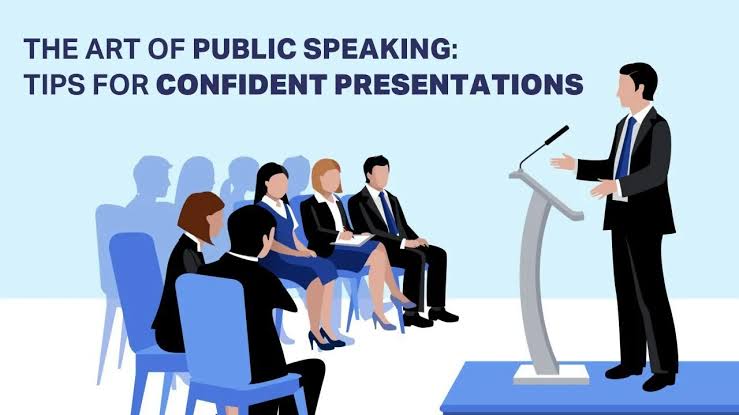Public speaking is still one of the most important skills for personal and professional success in 2025. Whether you are speaking in a meeting, hosting a webinar, presenting an idea, or giving a keynote, being able to speak clearly and confidently affects how people receive and remember your message. Even with new technology and online communication, speaking in person remains powerful. Learning public speaking is not about getting rid of fear but about managing it and using it to your advantage. This guide provides simple tips and tools to help you speak with more confidence and impact.
Understand Your Audience
The foundation of any successful public speaking engagement is knowing who you’re speaking to. Understanding your audience’s needs, expectations, background, and level of familiarity with the topic helps tailor your message accordingly. In 2025, audience analysis tools powered by AI can now provide real-time demographic and engagement insights, especially during virtual presentations. Whether your listeners are industry professionals, students, or general attendees, adapt your tone, vocabulary, and examples to their level. This ensures better connection and comprehension, making your message more memorable and persuasive.
Structure Your Message Effectively
A well-structured presentation not only keeps your audience engaged but also helps you stay on track. Begin with a strong opening that grabs attention—this could be a question, a bold statement, or a compelling story. Follow this with a clearly outlined body containing your main points, and end with a powerful conclusion that reinforces your key message and calls your audience to action. As of 2025, advanced slide tools like Beautiful.ai and Canva Presentations offer templates that help organize content in a visually appealing and logical way, which supports better message retention.
Practice with Purpose
Practice is essential, but purposeful practice is even more effective. Instead of simply memorizing lines, focus on refining your delivery, timing, body language, and ability to adapt. Record yourself and use AI-based tools like Yoodli or Orai, which provide detailed feedback on pacing, filler words, tone variation, and clarity. Rehearsing in front of a friend, coach, or mirror also builds muscle memory and reveals areas for improvement. Make practice sessions simulate real-life conditions as closely as possible to prepare for actual performance stressors.
Master Your Body Language
Non-verbal communication plays a huge role in how your message is received. Your posture, gestures, facial expressions, and eye contact all influence credibility and engagement. In a physical setting, standing upright with open gestures conveys confidence and openness. In virtual settings, positioning your camera at eye level and using subtle hand movements can enhance engagement. Wearables and smart mirrors now offer real-time feedback on posture and physical presence, helping speakers adjust their stance and movement for maximum impact.
Control Your Voice and Pace
The power of your voice is central to commanding attention. Mastering your tone, volume, pitch, and pacing helps emphasize key points and maintain audience interest. Speaking too fast may confuse listeners, while a monotonous tone can disengage them. Modern training apps in 2025 can analyze your speech patterns and coach you on voice modulation and breathing techniques. Deliberate pauses after important points create emphasis and allow your message to sink in, while a varied pitch keeps your delivery dynamic and engaging.
Use Visual Aids Wisely
Visual aids should enhance your message, not overwhelm it. Slides, props, or multimedia tools should serve as visual reinforcements rather than crutches. Keep slides clean, with minimal text and relevant images or data. Avoid overloading your presentation with graphs or animations that distract from your speech. Tools like Prezi, Miro, and Microsoft Designer, which now integrate AI-generated visuals, can help build presentations that visually support rather than dominate your message.
Engage Your Audience
Great public speaking is a dialogue, not a monologue. Engage your audience through questions, interactive elements, and storytelling. In 2025, tools such as Slido and Mentimeter allow you to conduct live polls and Q&A sessions, even in virtual or hybrid environments. When you encourage interaction, you build rapport and make the session feel more personal. Sharing anecdotes or real-world examples also builds emotional connections that deepen your message’s impact.
Manage Anxiety and Nervousness
Even the most experienced speakers feel nervous before stepping in front of an audience. The key lies in managing that anxiety rather than trying to eliminate it. Deep breathing, positive visualization, and grounding exercises can help calm your mind and body. In recent years, wearable devices that monitor stress indicators such as heart rate variability (HRV) have become popular tools to detect and regulate anxiety before a speech. Reframing nervousness as excitement also changes your mental approach and gives you energy rather than fear.
Learn from Feedback
Feedback is invaluable for growth. After each presentation, seek honest input from trusted peers or audience members. In 2025, many event platforms provide post-session analytics on audience engagement, attention spans, and feedback forms. Analyzing this data can help you understand what worked well and what needs refinement. Be open to constructive criticism and treat each speaking opportunity as a step toward improvement.
Keep Improving Through Continuous Learning
Public speaking is a skill that evolves with practice and reflection. Read books, take online courses, and attend speaking workshops to expose yourself to different styles and techniques. Platforms like Coursera, LinkedIn Learning, and Toastmasters International offer programs specifically geared toward improving presentation and communication skills. Watch renowned speakers and analyze their delivery styles, noting what makes them effective. By continuously learning, you not only expand your skillset but also stay inspired.
Conclusion
Mastering the art of public speaking is a journey that demands awareness, effort, and persistence. As of July 2025, advancements in technology have provided tools that make it easier than ever to refine your skills, receive feedback, and engage diverse audiences. But the heart of confident communication remains rooted in authenticity, clarity, and connection. By understanding your audience, practicing intentionally, managing nerves, and continuously learning, you position yourself not only as a more confident speaker but also as a more effective leader. Whether your goal is to inspire, inform, or influence, the ability to speak well in public will always be a cornerstone of personal and professional success.



